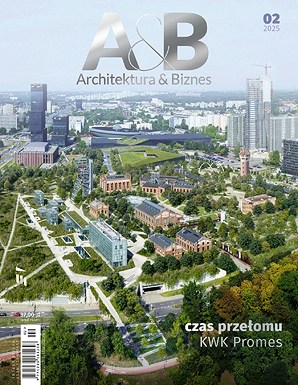"Healthy city." What does this actually mean? It was defined according to their criteria by the authors of the first ranking of "healthy cities." In the overall ranking, Warsaw wins. But in individual categories the leaders are sometimes a surprise. Standing high, for example, are Rzeszow, Chorzow or Opole.
In the description and evaluation of cities, the word "health" has been appearing more and more often lately. On the one hand, there is a growing awareness of the civilizational nuisances of city life. On the other hand, the term "healthy city," which is also a promise, can make it easier for local governments to introduce beneficial, though not always universally accepted, changes (such as limiting traffic or stricter planning rigor).
sixty and six
Announced a week ago in Sopot, the "Healthy Cities Index" is a joint venture between the Warsaw School of Economics, the Open Eyes Ecomony Summit and the LUX Med Group. What did the researchers base their findings on? Explains Agnieszka Chłoń-Domińczak, PhD, pro-rector for science at the Warsaw School of Economics.
We asked ourselves a lot of questions: what does the term healthy city mean, what are the main areas where cities can and do take action to improve the quality of life and, at the same time, the health of their residents. We looked at both the practices of Polish and foreign cities, of course, taking into account the specifics of our local governments.
Starting from these assumptions, a methodology was developed to create a ranking for 66 cities with county rights (entire report: here). The survey was ultimately based on eight categories, although each has a different weighting. Unsurprisingly, the most important aspect here is health - understood primarily as access to various health policy programs. Overall, this category has a weight of almost 33 percent.
The second most important area is "environment" (22.1 percent). Other aspects are (in order of assigned weight): population and generation, housing, infrastructure, space, utilities and social services, and education (9.5 to 5.4 percent).
In the overall ranking, Warsaw is the best, followed by Opole. In third place is Chorzow, and the top ten is closed by Poznań. Dabrowa Gornicza, on the other hand, came in last, in 66th position. Less obviously is being done in individual categories. The area of "health" fared best for Opole (with the capital in second place and Chorzow in third). Meanwhile, in the "environment" category, Sopot leads the way (Olsztyn is second and Poznań is third).
Healthy Cities Index
source: www.luxmed.pl/assets/media/Indeks_Zdrowych_Miast.pdf
twice Rzeszów
In the less significant categories for the overall assessment, Rzeszow came in first place twice - in the areas of: "population and generations" and "municipal and social services." In the field of "housing," the leader is Gliwice. Nowy Sącz won in the "infrastructure" field. "Education" fared best in Bialystok. The "space" category, on the other hand, is the strength of smaller cities. Swinoujscie is in first place here, and of the large centers, only Krakow was in the top ten.
What was taken into account for areas of greater interest to architects and urban planners? "Space" was mirrored in terms of the acreage of green areas and waters, spending on urban greenery, the length of bicycle roads per 100 sq. km, but also - related to spatial solutions - the number of traffic accidents per 100,000 residents.
The acreage of green areas and the length of bicycle paths were also taken into account in the "environment" area, which was also evaluated through the prism of air quality. Concentrations of particulate matter and nitrogen dioxide in the air were compared, as well as overall emissions of pollutants. The number of active public transportation stops per 1 km of the city was also important.
Healthy Cities Index
source: www.luxmed.pl/assets/media/Indeks_Zdrowych_Miast.pdf
far to the bathroom
In the field of "housing," not only the number of apartments was assessed, but also units without seemingly common amenities, such as a bathroom or toilet. Also counted was central heating or connection to a sewage system, among other things.
The report was also laced with interesting facts. Thus: a quarter of the area of Olsztyn and Chorzow is green space, and in Sopot there are as many as 189 sports facilities per 100,000 residents (the national average is 19.7). On the other hand, the largest length of bicycle paths per 100 square kilometers of the city was recorded in Leszno.
How can this ranking help? Like any such study, it is based on subjectively selected criteria, and certainly the definition of a "healthy city" can be defined in many other ways. Nevertheless, the compilation of data and information contained in the report can be useful in managing cities. The ranking, if it is not a one-off undertaking, is also capable of unleashing greater ambition in local government officials. If only for image reasons, they will care more about improving the quality of the criteria evaluated by the "index."


























